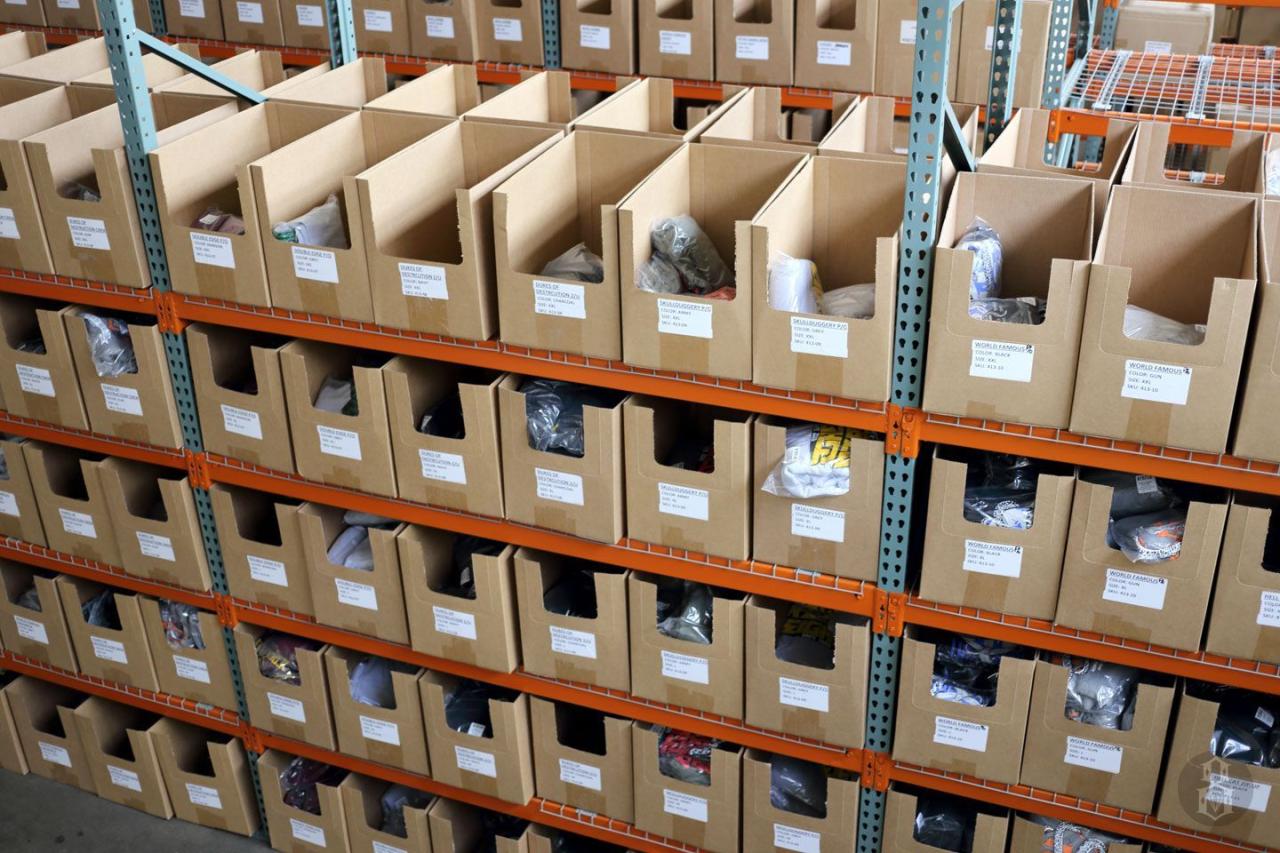
Optimizing Business Inventory Storage: A Strategic Imperative for Modern Enterprises
In the intricate dance of modern commerce, where supply chains stretch across continents and consumer expectations demand instant gratification, the unassuming warehouse or storage facility often goes unnoticed. Yet, beneath its utilitarian exterior lies the beating heart of any product-based business: inventory storage. Far from being a mere holding pen for goods, effective business inventory storage is a strategic imperative, a delicate balance between cost, efficiency, and customer satisfaction that can dictate the success or failure of an enterprise.
This article delves into the multifaceted world of business inventory storage, exploring its critical importance, the challenges it presents, the innovative solutions available, and the strategic advantages gained from its optimization.
The Strategic Importance of Inventory Storage
At its core, inventory storage is the practice of holding goods before they are sold or consumed. However, its significance extends far beyond this simple definition.
-
Ensuring Product Availability & Customer Satisfaction: The primary goal of any business is to meet customer demand. Adequate inventory storage ensures that products are available when customers want them, preventing stockouts, lost sales, and damage to brand reputation. In an age of instant gratification, delayed fulfillment is a significant deterrent.
-
Buffering Against Supply Chain Volatility: Global supply chains are inherently susceptible to disruptions – natural disasters, geopolitical events, economic fluctuations, or supplier issues. Well-managed inventory acts as a buffer, allowing businesses to continue operations and fulfill orders even when external factors cause delays or shortages in inbound materials.
-
Capitalizing on Economies of Scale: Purchasing raw materials or finished goods in larger quantities often comes with price breaks or reduced shipping costs. Storing this bulk inventory allows businesses to leverage these economies of scale, reducing per-unit costs and improving profitability.
-
Facilitating Production Efficiency: For manufacturers, having a readily available supply of raw materials and work-in-progress (WIP) inventory ensures continuous production without costly stoppages. This smooth flow enhances operational efficiency and reduces labor waste.
-
Managing Seasonal Demand: Many industries experience significant seasonal peaks and troughs. Effective storage allows businesses to build up inventory during off-peak seasons in anticipation of higher demand, preventing bottlenecks and lost revenue during busy periods.
-
Supporting Product Customization and Assembly: In industries requiring customization or final assembly, a well-organized inventory of components and sub-assemblies is crucial for efficient order fulfillment.
Understanding Different Types of Inventory
To manage storage effectively, it’s essential to understand the various categories of inventory a business might hold:
- Raw Materials: Components and ingredients used in the manufacturing process (e.g., fabric for clothing, steel for cars).
- Work-in-Progress (WIP): Partially finished goods that are still undergoing production (e.g., a car chassis on the assembly line).
- Finished Goods: Products that are ready for sale to customers (e.g., packaged electronics, completed apparel).
- MRO (Maintenance, Repair, and Operations) Inventory: Items needed to keep the business running but not directly part of the product (e.g., spare parts for machinery, office supplies).
- Safety Stock: Extra inventory held to guard against unexpected fluctuations in demand or supply chain disruptions.
- Cycle Stock: Inventory intended to meet average demand between replenishment orders.
Key Challenges in Inventory Storage
Despite its strategic importance, inventory storage presents a myriad of challenges that businesses must meticulously address:
-
Cost of Holding Inventory: This is arguably the biggest challenge. Holding costs include:
- Storage Costs: Rent, utilities, maintenance, insurance.
- Capital Costs: Money tied up in inventory that could be used elsewhere.
- Obsolescence: Products becoming outdated, unsellable, or losing value.
- Spoilage/Damage: Perishable goods expiring, or items being damaged in storage.
- Shrinkage: Loss due to theft, misplacement, or administrative errors.
-
Space Optimization: Maximizing the use of available physical space is crucial. Inefficient layouts lead to wasted space, longer picking times, and higher operational costs.
-
Inventory Accuracy & Visibility: Knowing precisely what inventory is on hand, where it’s located, and its condition is paramount. Inaccurate records lead to stockouts, overstocking, and operational inefficiencies.
-
Labor Management: Hiring, training, and retaining skilled warehouse staff is challenging. Labor costs, safety regulations, and productivity targets add complexity.
-
Security: Protecting inventory from theft, damage, and environmental hazards (fire, flood) requires robust security systems and protocols.
-
Scalability & Flexibility: Storage solutions must be able to adapt to fluctuating demand, seasonal changes, and business growth without incurring prohibitive costs or operational disruptions.
-
Technology Integration: Implementing and integrating advanced inventory management systems, automation, and data analytics tools can be complex and costly.
Modern Solutions and Strategies for Optimized Inventory Storage
Addressing these challenges requires a blend of strategic planning, technological adoption, and operational excellence.
1. Strategic Location and Facility Types:
- On-Site Storage: Convenient for immediate access, but often limited by space and less cost-effective for large volumes.
- Off-Site Warehousing: Dedicated facilities designed for storage, often optimized for specific product types (e.g., temperature-controlled). Can be company-owned or rented.
- Distribution Centers (DCs): More than just storage, DCs are hubs for receiving, sorting, and shipping goods, often designed for rapid throughput rather than long-term storage.
- Third-Party Logistics (3PL) Providers: Outsourcing storage, fulfillment, and transportation to a specialized company. This offers scalability, expertise, and reduced capital expenditure, ideal for businesses without the resources or desire to manage their own warehousing.
- Cross-Docking: A strategy where incoming goods are immediately transferred to outbound shipments without being stored. Minimizes storage time and costs but requires precise coordination.
- Micro-Fulfillment Centers (MFCs): Smaller, highly automated facilities often located closer to urban centers, enabling faster last-mile delivery, especially for e-commerce.
2. Leveraging Technology for Precision and Efficiency:
- Inventory Management Systems (IMS): Software that tracks inventory levels, sales, orders, and deliveries, providing real-time visibility and control.
- Warehouse Management Systems (WMS): Advanced software specifically designed to manage warehouse operations, including receiving, putaway, picking, packing, shipping, and labor management. Often integrates with IMS and ERP.
- Enterprise Resource Planning (ERP) Systems: Comprehensive software suites that integrate all core business processes, including inventory, finance, HR, and supply chain, providing a holistic view.
- Barcoding and RFID (Radio-Frequency Identification): Technologies for rapid and accurate tracking of individual items or pallets, significantly reducing manual errors and improving visibility.
- Automation and Robotics:
- Automated Storage and Retrieval Systems (AS/RS): Computer-controlled systems for automatically placing and retrieving items from designated storage locations.
- Automated Guided Vehicles (AGVs) / Autonomous Mobile Robots (AMRs): Robots that transport goods within the warehouse, reducing manual labor and improving efficiency.
- Robotic Picking Systems: Robots capable of identifying and picking individual items for order fulfillment.
- Data Analytics and AI: Using historical data and machine learning algorithms to improve demand forecasting, optimize inventory levels, identify trends, and predict potential disruptions.
3. Implementing Smart Operational Strategies:
- Warehouse Layout and Slotting: Designing the warehouse floor plan for optimal flow, placing fast-moving items in easily accessible locations (slotting), and grouping complementary products together to minimize travel time for pickers.
- Inventory Control Techniques:
- ABC Analysis: Categorizing inventory items based on their value or importance (A-items being high value/fast-moving, C-items low value/slow-moving) to prioritize management efforts.
- Just-In-Time (JIT) / Lean Inventory: Minimizing inventory holdings by receiving goods only as they are needed for production or sale, reducing holding costs but requiring highly reliable supply chains.
- Cycle Counting: Regularly counting a small, specific portion of inventory on an ongoing basis, rather than a single annual physical count, to maintain accuracy and identify discrepancies quickly.
- FIFO (First-In, First-Out) / LIFO (Last-In, First-Out): Methods for valuing inventory and ensuring proper stock rotation, especially critical for perishable goods (FIFO).
- Robust Demand Forecasting: Utilizing historical sales data, market trends, promotional plans, and external factors to predict future demand accurately, thereby optimizing purchasing and storage levels.
- Safety and Security Protocols: Implementing robust access control, surveillance systems, environmental controls (temperature, humidity), and employee training to prevent theft, damage, and ensure a safe working environment.
- Sustainability Practices: Adopting energy-efficient lighting, optimizing heating/cooling, reducing waste, recycling packaging materials, and exploring sustainable building materials for storage facilities.
Benefits of Optimized Inventory Storage
The concerted effort to optimize inventory storage yields substantial benefits that resonate throughout the entire business:
- Reduced Operating Costs: Lower holding costs, less waste from spoilage/obsolescence, optimized space utilization, and reduced labor expenses.
- Improved Customer Satisfaction: Fewer stockouts, faster order fulfillment, and higher order accuracy lead to happier, more loyal customers.
- Enhanced Cash Flow: Less capital tied up in excess inventory frees up funds for other investments or operational needs.
- Greater Operational Efficiency: Streamlined processes, reduced picking errors, faster throughput, and better resource allocation.
- Better Risk Management: A more resilient supply chain, better prepared for disruptions, and reduced exposure to inventory-related losses.
- Scalability and Flexibility: The ability to adapt quickly to changes in demand or market conditions without significant infrastructure overhaul.
- Competitive Advantage: Businesses with superior inventory storage and fulfillment capabilities can offer faster shipping, wider product availability, and more competitive pricing.
The Future of Inventory Storage
The landscape of inventory storage is continually evolving, driven by technological advancements and shifting market demands. The future promises:
- Hyper-Automation: "Lights-out" warehouses where robots and AI manage nearly all tasks, further reducing labor costs and increasing efficiency.
- Predictive Analytics and AI: Sophisticated algorithms will predict demand with even greater accuracy, anticipate supply chain disruptions, and automatically optimize inventory levels and storage locations.
- IoT (Internet of Things): Sensors on products and within facilities will provide real-time data on temperature, humidity, location, and movement, offering unprecedented visibility.
- Sustainable Logistics: A greater emphasis on eco-friendly warehousing, including renewable energy sources, waste reduction, and optimized transportation routes to minimize carbon footprint.
- Decentralized Networks: A move towards more localized, smaller fulfillment centers closer to customers to enable ultra-fast delivery, especially for e-commerce.
Conclusion
Business inventory storage is no longer a back-office function; it is a critical strategic component that directly impacts profitability, customer satisfaction, and competitive standing. Modern enterprises must move beyond viewing storage as a necessary evil and instead embrace it as an opportunity for innovation and optimization. By investing in the right technologies, adopting intelligent operational strategies, and continuously refining their approach, businesses can transform their inventory storage from a cost center into a powerful engine driving efficiency, resilience, and sustained growth in an ever-demanding marketplace. The path to mastery lies in understanding that every item stored, every process optimized, and every technology deployed contributes to the seamless flow of goods that defines successful commerce.

